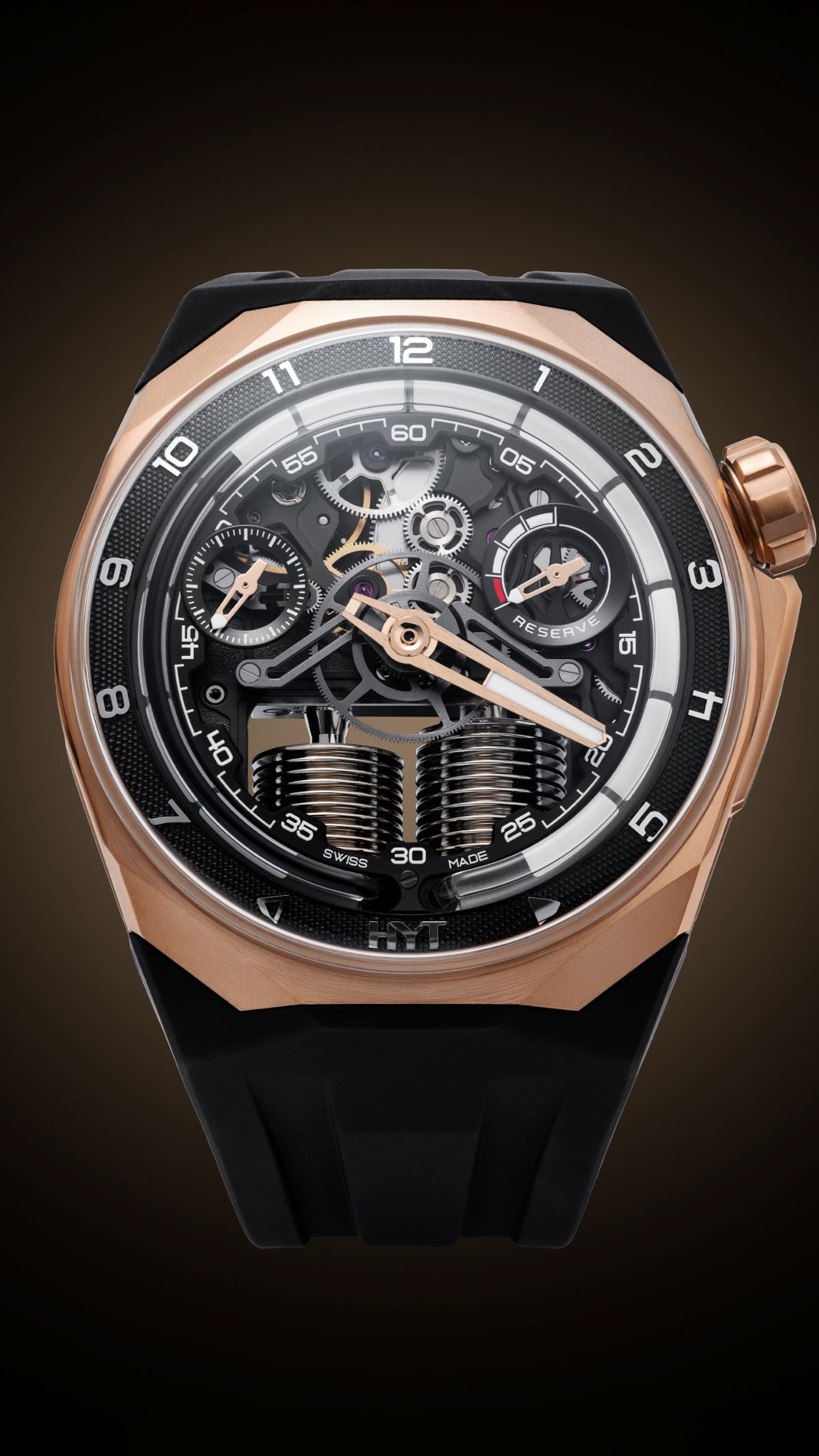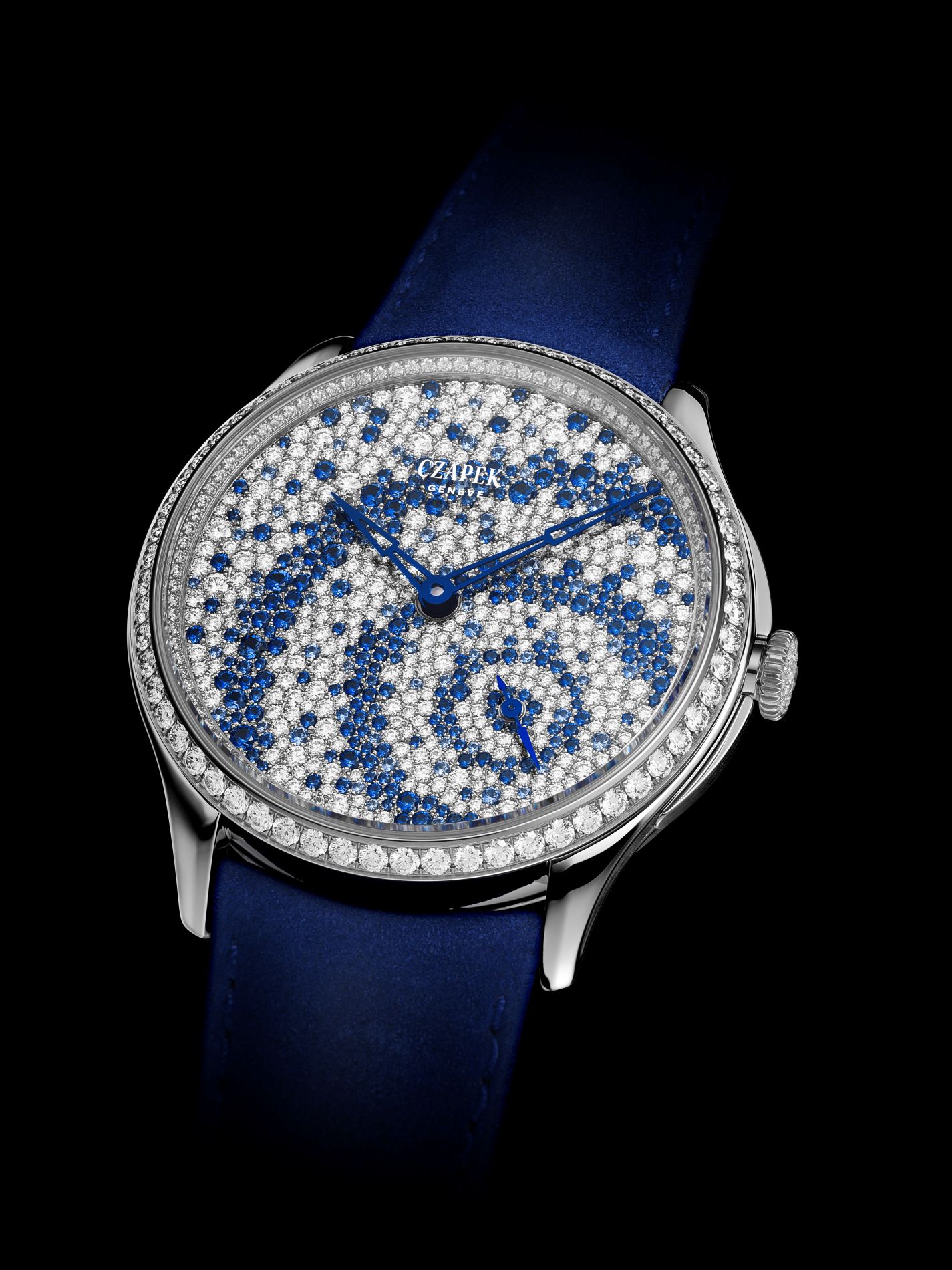Le Brassus, March 2024 – Swiss Haute Horlogerie manufacturer Audemars Piguet unveils a new iteration of its Royal Oak Selfwinding Flying Tourbillon Extra-Thin (RD#3) in 37 mm, for the first time executed in 18-carat white gold. The aesthetic of the new timepiece takes inspiration from the two 39 and 37 mm RD#3 models in stainless steel released in 2022 as part of the Royal Oak’s 50th anniversary. However, the new version combines its 18-carat white gold case and bracelet with a bezel set with baguette-cut diamonds for rich plays of light. In addition, the dial presents a new colourway with a Petite Tapisserie in deep smoked blue hues and baguette-cut diamond hour-markers. Powered by the Manufacture’s ultra-thin selfwinding Calibre 2968 measuring a mere 3.4 mm in thickness, this feat of engineering and design furthers Audemars Piguet’s offering of complicated watches for the slenderer wrists.

A FINE CASE ENGAGING WITH LIGHT
The new 37 mm timepiece encompasses an extra-thin 18-carat white gold case and bracelet providing rich plays of light. Both are finished with the Manufacture’s trademark alternation of satin brushing and polished chamfers, thus engaging with the light like the facets of a diamond. In addition, the wide polished bevels of the case and the tapering links of the bracelet bestow it with a slender silhouette, while reinforcing its ergonomics. The 32 baguette-cut diamonds adorning the bezel furthers the luminous effect created by the watch’s multifaceted architecture.
Measuring 8.1 mm in thickness, this new timepiece is the thinnest gold model offered in the 37 mm Royal Oak collection. It owes its finesse to the Royal Oak “Jumbo” that inspired the aesthetic of the RD#3 line, debuted in 2022 for the Royal Oak’s 50th anniversary. For the occasion, Audemars Piguet took on the challenge to fit a flying tourbillon movement in a 39 mm “Jumbo” case—a first as this complication was previously equipping models in 41 mm exclusively. It also pushed the limits of feasibility further by presenting this complication in an even smaller 37 mm case size, which also incorporated the Royal Oak collection’s design evolution introduced on 34, 37 and 38 mm models that same year.

AN EXPRESSIVE SMOKED BLUE DIAL
Just like the 37 mm steel RD#3 version, the new Royal Oak Selfwinding Flying Tourbillon Extra-Thin integrates several aesthetic elements of the “Jumbo” dial. Similarly to 39 mm models, it encompasses a Petite Tapisserie, offered in a new smoked blue colourway. The blue shade is obtained by Physical Vapour Deposition (PVD), whereas the smoked effect seen on the periphery is achieved by meticulously spraying black varnish while the dial is rotating. The colour gradation evolving from the centre outwards accentuates the moiré effect of the guilloché pattern.
The dial’s deep blue hues are countered by bright accents. Baguette-cut diamond hour-markers echo the glowing bezel, while playing with the Royal Oak’s strong lines and multiple facets. The bathtub-shaped white gold hands—reminiscent of the original Royal Oak—are filled with luminescent material aiding legibility in dim light. At 6 o’clock, the titanium flying tourbillon cage, in which pulsates the rhodium-toned balance wheel, adds the final touch.

AN ULTRA-THIN FLYING TOURBILLON MOVEMENT
The timepiece is powered by the ultra-thin selfwinding flying tourbillon movement, Calibre 2968, measuring a mere 3.4 mm in thickness, which saw the light of day in 2022. This delicate, high-end complication counteracts the effects of gravity on the watch’s accuracy. The balance wheel and escapement are housed in a tiny rotating cage that completes a revolution every minute to prevent their centre of gravity from staying in the same orientation. Contrary to its tourbillon sibling, the flying tourbillon cage is only supported from below to leave the watch’s beating heart unobscured on the dial side. It is considered today as a symbol of watchmaking art as only a few expert watchmakers retain the skills required for its production.
Calibre 2968 was developed to fit in the exact dimensions of the iconic 39 mm Royal Oak “Jumbo” case—a first as this complication was previously reserved for 41 mm diameters—before being housed in an even smaller 37 mm case. This technical constraint required the Manufacture to rethink the totality of the flying tourbillon cage to reduce its thickness while retaining its initial proportions. In addition to repositioning several components, the teams included a new escapement to drive the titanium cage peripherally, improving energy distribution to the tourbillon, while lightening and refining this regulating organ. In addition, the new escapement relies on an oscillator with increased amplitude that pushes the amplitude limit at which knocking happens—a state which occurs when excessive energy from the escapement is transferred to the oscillator—and enhances reliability, energy efficiency and precision.
Calibre 2968 was also conceived from an aesthetic standpoint. On the caseback side, the rhodium-toned bridges are openworked to unveil the movement’s inner workings, while achieving a harmonious, symmetrical architecture. On the dial side, the geometry and positioning of the balance wheel arms have been modified to make the beating heart even more perceptible. The technical design of the movement results in the flying tourbillon being placed at dial level, for a greater visual experience.
The decoration of the movement components, visible through the sapphire caseback, combines the dynamism and classicism of V-angles with the modernity of traits tirés – a finish that appears on the mainplate and bridges and replaces the traditional Côtes de Genève. The caseback also reveals the rhodium-toned 22-carat pink gold oscillating weight that winds the calibre with each movement of the wrist.









